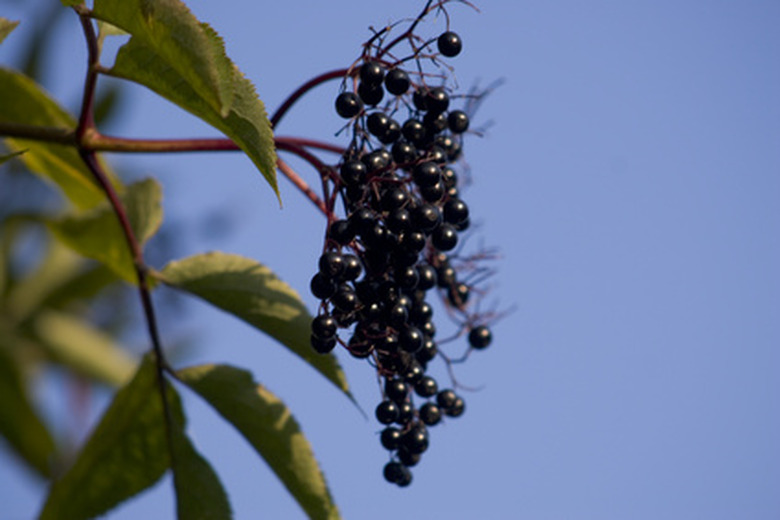Elderberry Leaf Identification
The elderberry is a deciduous plant that inhabits woodland areas throughout the United States, Canada and Alaska. It is frequently found near lakes, swampy regions and other areas where soil remains moist or even wet. The plant produces a berry that has a slightly sweet and tart flavor. The leaves of elderberry plants can help to identify it from other plants, such as water hemlock, similar in appearance to elderberry, but extremely toxic.
Plant
Elderberries grow as large shrubs or small trees. They can frequently reach 12 to 20 feet in height. They produce several branching trunks from the base of the plant that grow upward .The bark is grayish brown in color, thin and relatively smooth, becoming rougher with age. The plant also produces umbrella-like sprays of tiny white flowers that eventually form little blueish purple berries that are edible. Though the plant is deciduous, it is often evergreen in the southern United States.
- The elderberry is a deciduous plant that inhabits woodland areas throughout the United States, Canada and Alaska.
- The leaves of elderberry plants can help to identify it from other plants, such as water hemlock, similar in appearance to elderberry, but extremely toxic.
Leaves
The leaves of the elderberry plant are compound, with between five and 11 leaflets along either side of a long, thin leaf stem. The stems are arranged opposite each other along the branches of the plant. Each stem has a gutter on top running down the entire length of the stem. The leaf holds five to 11 leaflets on either side of the stem with a terminal leaflet at the end.
Leaflets
Each leaflet is elliptical or lance-shaped. The leaflets are colored dark green on the upper surface and or lighter underneath. Both upper and lower surfaces of each leaflet are smooth, with tiny hairs projecting from along a central midrib. The base of each leaflet is wedge-shaped or rounded and the tip is pointed. The margins, or edges, of the leaflet are sharply serrated.
- The leaves of the elderberry plant are compound, with between five and 11 leaflets along either side of a long, thin leaf stem.
- The base of each leaflet is wedge-shaped or rounded and the tip is pointed.
Size
Each elderberry leaf is between 5 and 9 inches in total length. Each leaflet on the leaf ranges between 1 1/2 and 6 inches long and three-quarters to 2 1/2 inches wide.
Water Hemlock
Leaf identification can be used to differentiate between edible elderberry plants and poisonous water hemlock. Both species grow in moist or wet environments. Both have compound leaves that are very similar. The primary difference is that the leaflets of elderberry leaves are arranged opposite each other along the leaf stem. On the other hand, water hemlock leaflets are arranged alternately along the leaf stem.
- Each elderberry leaf is between 5 and 9 inches in total length.
- The primary difference is that the leaflets of elderberry leaves are arranged opposite each other along the leaf stem.
